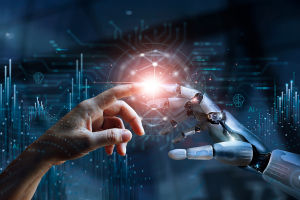Have you ever wondered how robots can "learn" and adapt to their environment? It might seem like something out of science fiction, but machine learning is rapidly becoming an integral part of our everyday lives.
From voice assistants to self-driving cars, robots are learning to make decisions, improve their performance, and even predict outcomes. But how do they actually do it?
How do they learn without a teacher standing by? In this article, we'll dive into the science behind machine learning, exploring how robots mimic human learning processes and continuously improve.
What Is Machine Learning?
Machine learning (ML) is a subset of artificial intelligence (AI) where systems are designed to automatically learn from data without being explicitly programmed. The goal is for the machine to identify patterns in the data, make predictions, and improve its performance over time. It's similar to how we, as humans, learn from our experiences, observations, and feedback.
Just as we learn from trial and error, robots also refine their abilities by processing vast amounts of data, recognizing patterns, and adjusting their actions based on the results. Instead of being given a step-by-step instruction manual, these systems use algorithms to analyze data and make decisions on their own.
How Do Robots Learn?
At the core of machine learning is the concept of data. Just as humans need experience to learn, robots require data to "train" their systems. There are several key steps involved in how robots learn:
1. Data Collection: Machines need data to start learning. For example, in a robot used for facial recognition, the system would require thousands of images of faces to analyze and recognize patterns.
2. Training: During training, the robot is exposed to various examples (data), which help it understand different scenarios. The system adjusts its algorithms to improve its understanding of the patterns.
3. Testing and Feedback: Once the robot has been trained, it tests its skills on new, unseen data. Feedback is given based on its performance, just as we might get feedback on a test. If the robot performs poorly, it goes back and adjusts its learning model to improve.
4. Self-Optimization: As robots interact with the world and collect more data, they continuously refine their models. Over time, the robot's performance becomes more accurate and efficient. This is where the concept of self-optimization comes in—machines get better as they learn more and receive feedback.
Types of Machine Learning
There are three primary types of machine learning that robots use:
1. Supervised Learning: In supervised learning, robots are given labeled data, meaning that the data already has the correct answers. For example, a robot might be shown images of animals, with labels like "dog," "cat," or "bird." The robot learns to associate the images with the correct labels. It's like a teacher guiding the learning process.
2. Unsupervised Learning: In unsupervised learning, the robot is given data without labels, meaning it must figure out patterns on its own. This type of learning is used when we don't know exactly what we're looking for, but we want the machine to find patterns, clusters, or structures in the data. For example, it might group similar objects together without being told what those objects are.
3. Reinforcement Learning: Reinforcement learning is based on trial and error. In this method, robots receive feedback in the form of rewards or penalties based on their actions. The robot learns to take actions that maximize its rewards and minimize penalties. This type of learning is used in applications like self-driving cars, where robots learn to navigate complex environments.
Applications of Machine Learning in Robotics
Machine learning has countless applications in robotics, ranging from manufacturing robots to healthcare systems. Let's look at some of the exciting ways robots are learning and evolving:
• Self-Driving Cars: Self-driving cars use machine learning to analyze their surroundings, recognize objects, and make decisions on the road. They learn from vast amounts of data collected from sensors, cameras, and past driving experiences.
• Personal Assistants: Robots like Alexa, and Assistant learn from interactions with us. They adjust their responses and improve over time by recognizing patterns in our speech and preferences.
• Healthcare: In healthcare, robots use machine learning to assist doctors in diagnosing diseases, analyzing medical images, and even performing surgeries with high precision.
• Robotic Manufacturing: Industrial robots use machine learning to optimize production processes, detect defects, and improve efficiency in factories.
Challenges and Future of Machine Learning
While machine learning has made significant strides, there are still challenges to overcome. One of the biggest challenges is ensuring that robots can make ethical decisions and handle situations with moral implications. Additionally, training models require vast amounts of data, and privacy concerns around data collection and use must be addressed.
Another issue is the "black-box" nature of many machine learning models. In some cases, it's difficult to understand how a robot arrived at a certain decision. This lack of transparency can be concerning, especially in critical applications like healthcare or autonomous driving.
Looking ahead, the future of machine learning in robotics is promising. As data collection methods improve, algorithms become more sophisticated, and ethical frameworks are developed, we can expect even more advanced, self-optimizing robots. These machines will continue to learn and adapt to the world around them, improving their functionality and efficiency.
Conclusion
In conclusion, the way robots learn is closely tied to how we, as humans, learn. Through machine learning, robots can analyze data, recognize patterns, and optimize their performance over time. By mimicking human learning processes, robots are able to perform increasingly complex tasks, from autonomous driving to assisting in medical procedures. As technology advances, the capabilities of these machines will continue to expand, offering exciting possibilities for the future.
What do you think? Are you excited about the future of robots and AI, or do you have concerns about how they might impact our world? Let us know your thoughts!


